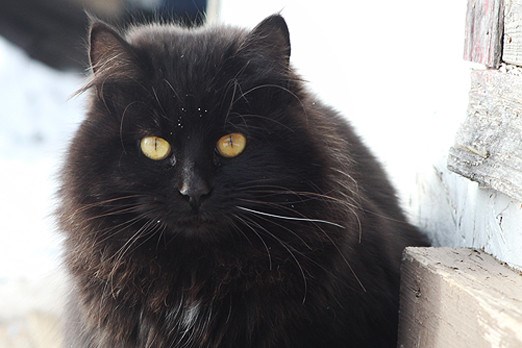A retired reverend says when he moved back to rural Thunder Bay he expected to see deer and moose in his yard, but instead found that cats were his biggest problem.
Richard Renick moved back to Thunder Bay in 2003 and started a home out along Highway 11/17 near Shuniah township. The modest home has a clear view of Lake Superior and the Sleeping Giant with plenty of trees surrounding the house. Renick, who injured his back in 1988, left Winnipeg because he said it had become too violent.
Now back in his hometown, he, Susan Abey and her son, Dalton, 12, have enjoyed the wildlife that have come by to visit their home. But a few years ago a neighbour lost their cat, which became pregnant.
This was the start of a growing problem where summer campers would leave their cats behind only to have litters of kittens later on, he said.
"They’re mass producing," Renick said on Sunday. "By this spring there will be another 50 or 60 cats. A bunch of them are going to be females then there is going to be a couple hundred. That’s going to be a big problem."
The options to solve the problem are to kill them, capture them to have them spay or neutered them or let them starve – none of which Renick said he could do.
Instead, Renick and Abey continue to feed the kittens and cats whatever they can. They cut up pieces of ham and bread and even build a make-shift shelter for the cats.
He said he went to visit a veterinarian and found that it would have cost him nearly $500 each to fix the 14 cats around his home.
"They have to get fixed but nobody has the means to do it," he said. "It’s going to be a bigger problem and we’re trying to find someone to get them fixed and let (the cats) enjoy themselves."
Both the City of Thunder Bay and Shuniah Township told Renick they couldn’t help him, he said. Something had to be done, but Renick said he didn’t know who to turn to for help.
"We figured we would find some organization to get them fixed and then take them back and let them live out here," he said. "They say feral cats only have two to three years but these ones could live up to 10 to 12 years."
Sign in or register
- Messages
- Post a Listing
- Your Listings
- Your Profile
- Your Subscriptions
- Your Likes
- Your Business
- Support Local News
- Payment History
Registered Users
Already have an account?
New Users
Create a free account.
